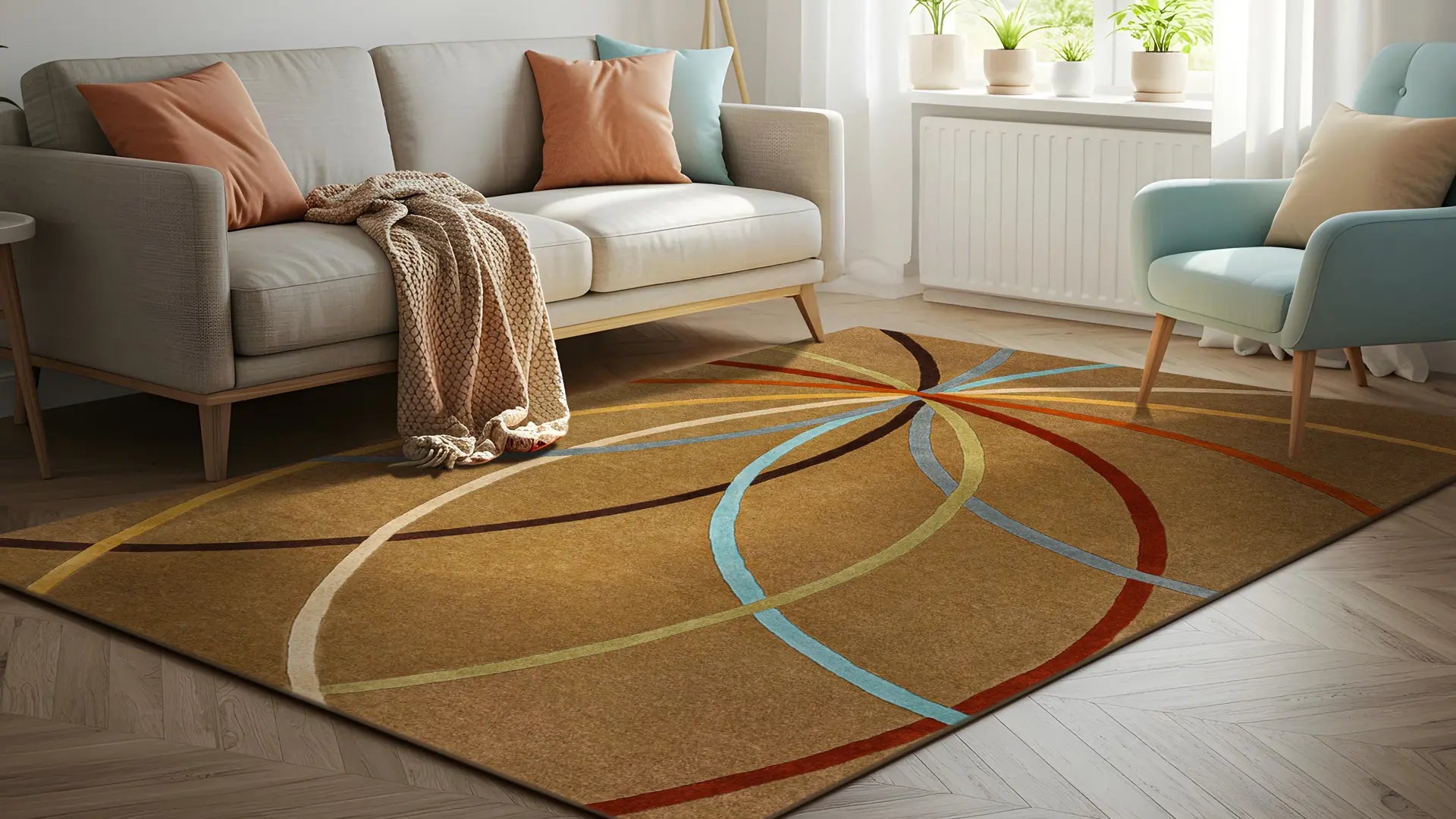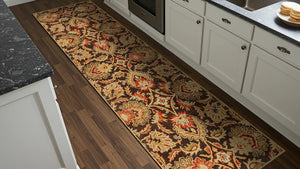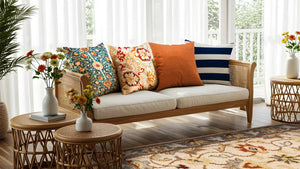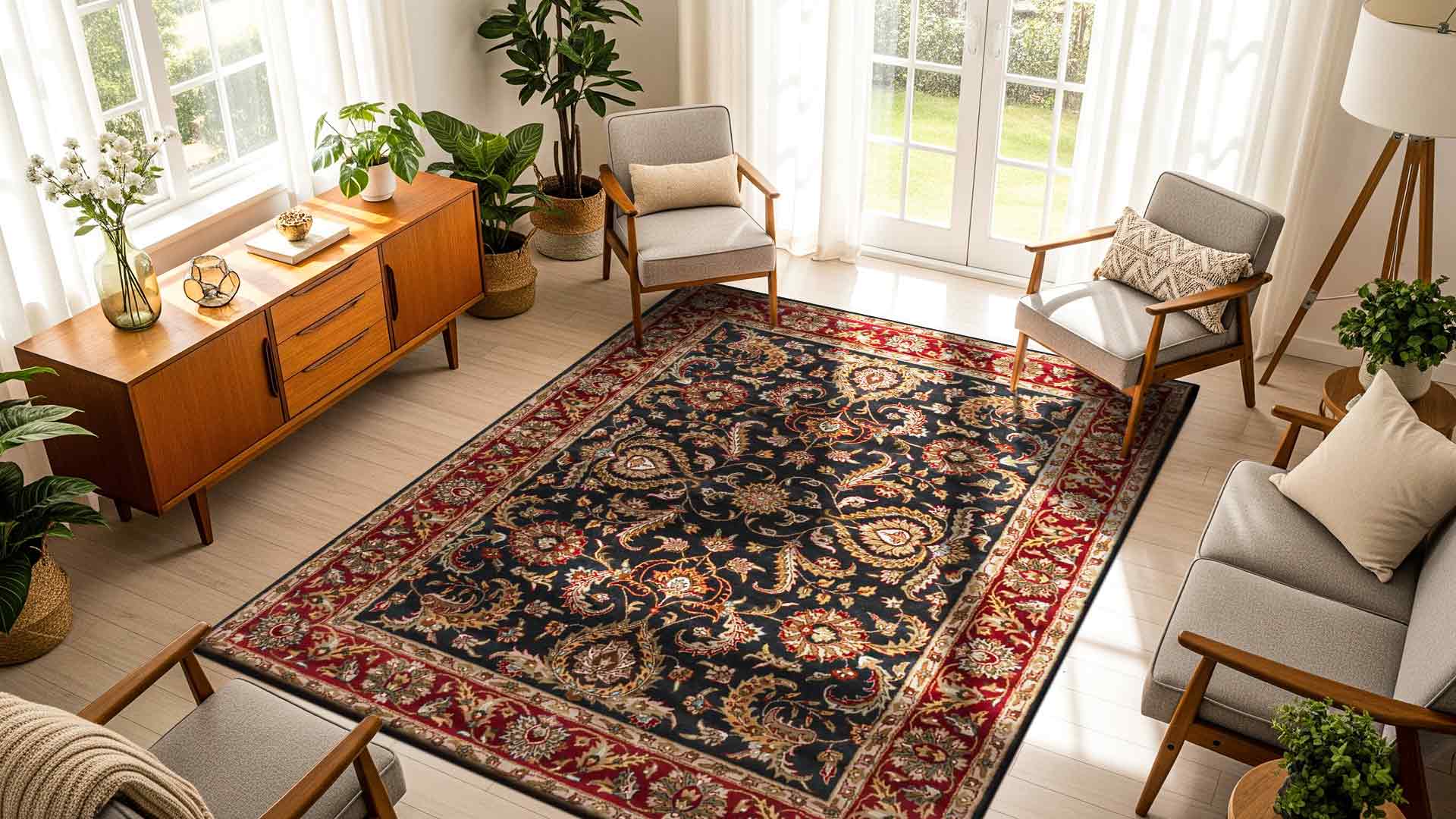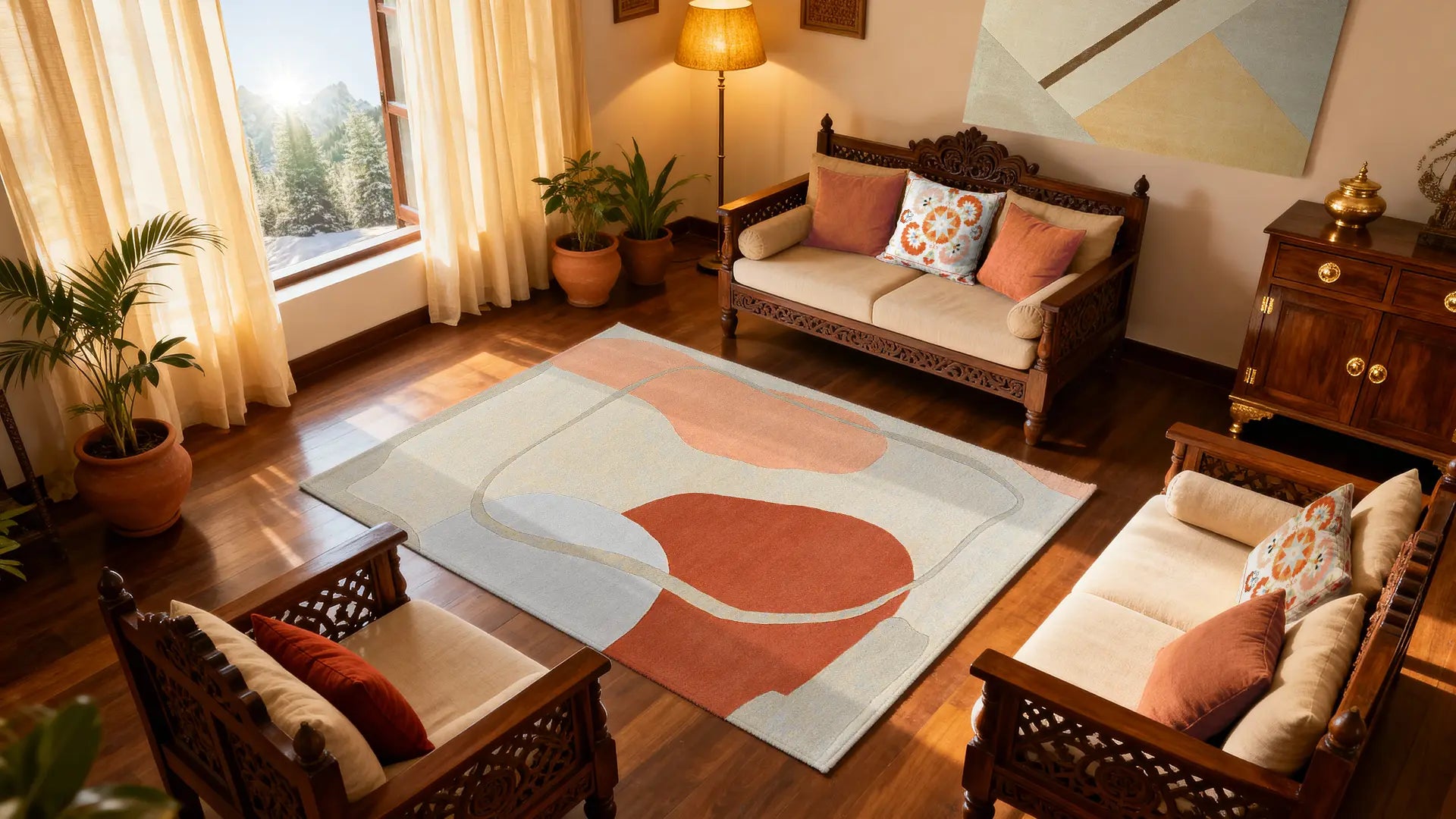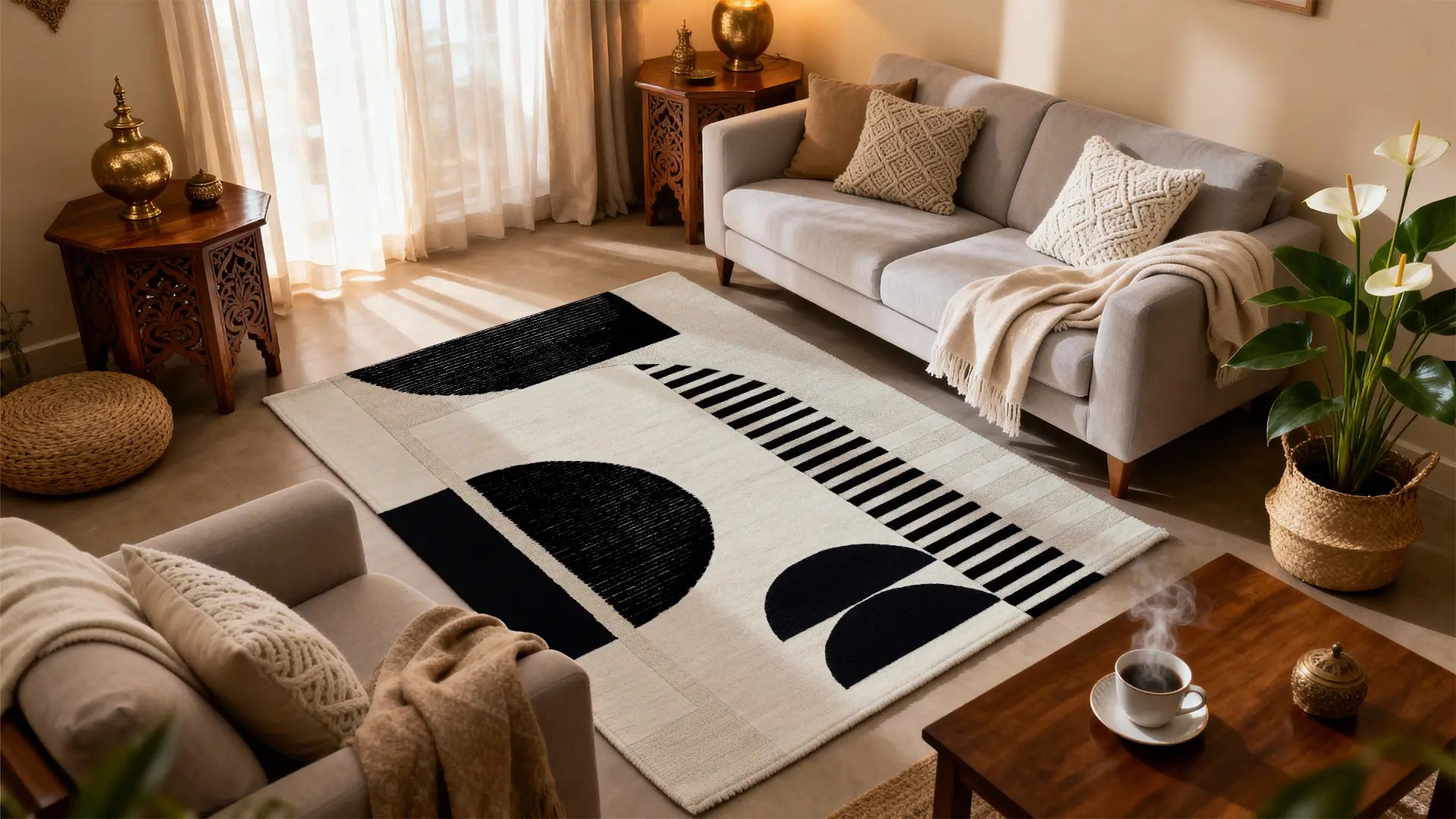Selecting the right rug color is a pivotal decision in interior design, capable of transforming the entire ambiance of a room. Beyond mere aesthetics, the color of a rug influences our emotional response to a space, interacts with existing decor, and even affects the perceived size and light within a room.
To make the process easier and more rewarding, we’ve rounded up five smart tips to help you select the perfect rugs and carpets color for your space, drawing inspiration from expert advice.
Smart Tip #1: Set the Mood with Color Psychology
Color significantly impacts how we feel in a space. When choosing a rug, understanding color psychology helps set the right mood. The right rug color can energize, calm, or add elegance, making it a powerful tool in creating emotionally resonant and well-designed interiors.
-
Warm colors (red, orange, yellow) evoke energy, cheer, and coziness—ideal for living rooms, dining areas, playrooms, and kitchens.
-
Cool colors (blue, green, purple) bring calm, relaxation, and sophistication—perfect for bedrooms, bathrooms, and home offices.
-
Neutral colors (beige, gray, white, ivory, camel, taupe) are versatile and timeless, creating serene backdrops for any room.
The rug’s color sets the emotional foundation of a space and influences other design choices. Start by identifying the room’s purpose and desired mood, then use color psychology to guide your selection for a cohesive and emotionally balanced design.
Smart Tip #2: Coordinate with Confidence: Aligning with Your Existing Decor
Before choosing a rug color, take stock of your room’s existing elements—furniture, wall colors, window treatments, and accessories. A rug should harmonize with these components to create a cohesive look. Start by identifying the two or three most dominant colors in the space. Your rug can echo these hues directly or introduce complementary shades that blend well. If your furniture is solid-colored, opt for a patterned rug that includes similar tones. If your furniture has bold patterns, a solid-colored rug will help balance the space.
Accent pieces such as throw pillows, curtains, and artwork can guide your rug color choice. Matching or complementing these elements enhances a unified design. Wall color also plays a key role—muted rugs can tone down bold walls, while colorful rugs can energize rooms with neutral walls. Flooring should not be overlooked; dark floors pair well with both dark and light rugs, depending on the desired contrast, while light floors benefit from bright or pastel rugs to add depth.
For best results, bring color swatches or throw pillows when shopping. Following the 60-30-10 color rule, rugs often serve as a secondary or accent color. In neutral spaces, rugs are a popular way to introduce color and character, making the room feel intentional and complete.
Smart Tip #3: Consider the Canvas: How Color Impacts Room Size and Light
The color of your rug can dramatically influence how spacious and bright a room feels. Light-colored rugs—such as white, cream, pastels, or light gray—reflect light and help smaller or darker rooms feel more open and airy. They enhance natural light and visually expand the space, making them ideal for compact areas or spaces with limited lighting.
In contrast, dark-colored rugs—like deep blue, charcoal, brown, or burgundy—absorb light and create a sense of coziness and intimacy. They work well in large or open-plan areas to anchor furniture and define zones. However, in smaller, dimly lit rooms, dark rugs can make the space feel more enclosed unless balanced with lighter décor.
Contrast between rug and floor color also impacts how the room feels. A light rug on a dark floor can open up a space, while a dark rug on a light floor can add warmth and structure. Medium-tone floors benefit from rugs that are distinctly lighter or darker to avoid blending in. By carefully considering rug color, room size, lighting, and flooring contrast, you can use color strategically to enhance spatial perception and overall design harmony.
Smart Tip #4: Practicality First – Choose Rug Colors That Fit Your Lifestyle
While style is important, practicality should guide your rug color choice. This is especially true in homes with kids, pets, or busy areas. The color you choose affects how well the rug hides dirt, stains, and wear over time. This directly impacts how much maintenance it needs and how long it lasts.
Darker colors like navy, charcoal, and deep brown are better for busy spaces like hallways and living rooms. Rugs with patterns or multiple colors are great at hiding everyday messes. This makes them a smart choice for active households. On the other hand, light-colored rugs—like whites, creams, and pastels—can brighten a room but show stains and dirt more easily. They are better for low-traffic areas like guest rooms or formal living spaces.
Besides color, think about durable materials like wool, synthetic blends, or natural fibers like jute and seagrass. These materials are easier to clean and last longer. Choosing a rug that fits your daily needs means less upkeep and more satisfaction. It also helps your rug look good even with regular use. Always match your rug color to your lifestyle to balance beauty and practicality.
Smart Tip #5: Express Yourself – Let Your Personal Style Guide You
While practical and design tips are helpful, the most important factor in choosing a rug color is your personal taste. Your home should reflect your personality, and the rug you choose plays a key role in expressing your style and creating a space you love.
Don’t feel obligated to follow trends if they don’t resonate with you. Choose colors that bring you joy and make your space feel comfortable and authentic. Look to items you already love—like artwork, pillows, or curtains—for color inspiration that feels natural and cohesive within your space.
Ultimately, the best rug color is one that you connect with emotionally. Expert advice can guide you, but your final decision should reflect your individuality. A rug is a lasting part of your home—select a color that you genuinely enjoy and that enhances the feeling of home every time you walk into the room.
Interested in learning more about how to find the right rug for your living room? Check out our Living Room Rug Buying Guide for helpful tips.
Conclusion: Weaving It All Together for a Beautifully Designed Space
Selecting the right rug color is about more than just looks—it’s a balance of mood, function, and personal expression. By applying color psychology, matching your existing décor, considering space and light, choosing practical options, and staying true to your style, you can make a confident, well-rounded decision.
Each tip plays a part in helping you find a rug that not only complements your space but also enhances your everyday living experience. Whether you're aiming for serenity, vibrancy, or practicality, a thoughtful color choice can bring it all together.
With these insights in mind, you’re ready to choose a rug color that ties your room together, reflects your personality, and elevates your home’s atmosphere for years to come.


